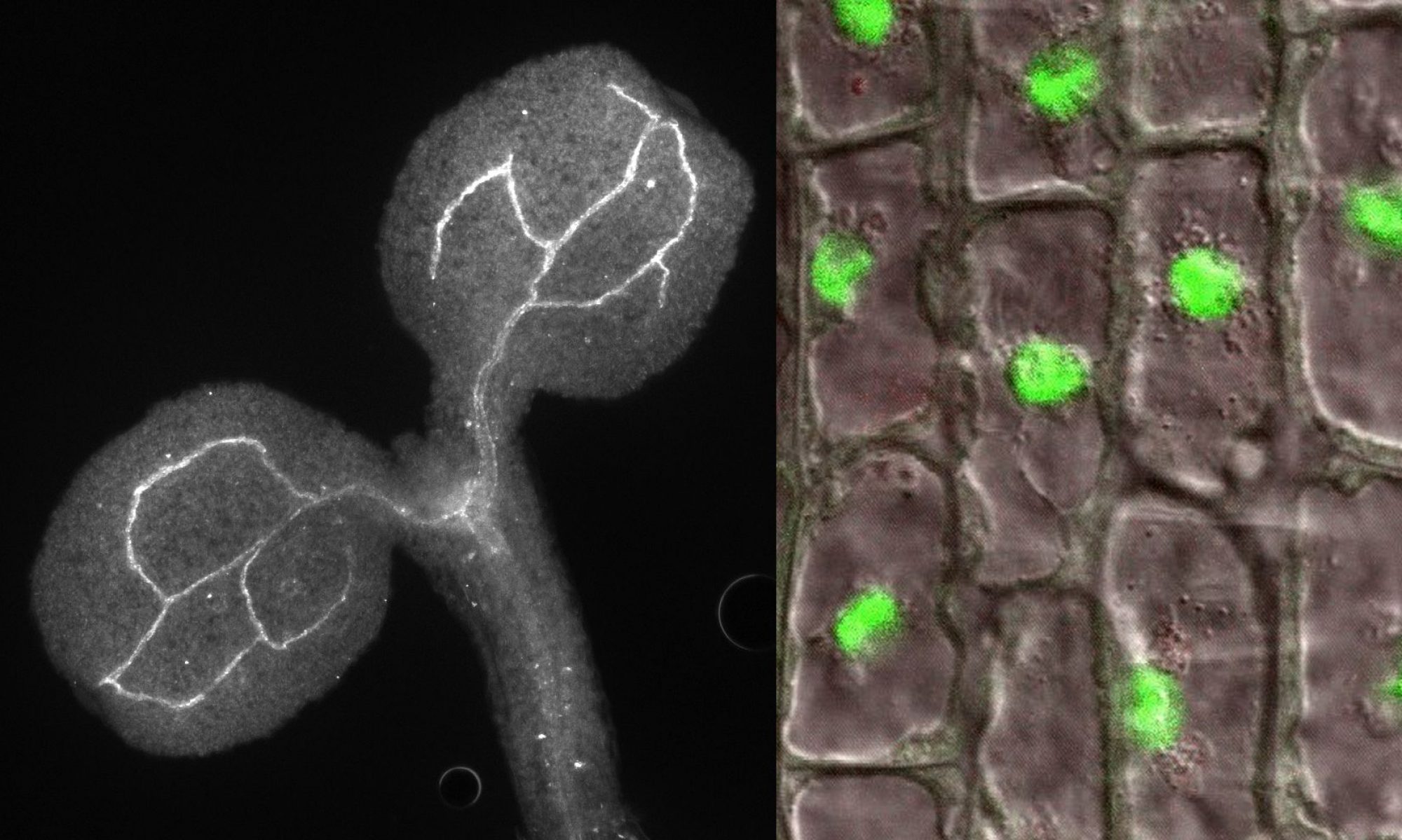The group was established in 2003 thanks to the Wellcome Trust Senior Fellowship in Biomedical Sciences for Central Europe. Our major activities are focused on different aspects of the synthesis and turnover of various classes of RNAs. We work with yeast Saccharomyces cerevisiae, plant Arabidopsis thaliana and more recently started a project on SARS-Cov-2 virus.
RECENT PUBLICATIONS
We publish so frequently that you get your first paper after a first year of PhD studies…
Decapping 5′-3′ exoribonucleases from the DXO/Rai1 family are highly conserved among eukaryotes and exhibit diverse enzymatic activities depending on the organism. The biochemical and structural properties of the plant DXO1 differ from the yeast and animal counterparts, which is reflected in the in vivo functions of this enzyme. Here we show that Arabidopsis DXO1 contributes to the efficient processing of rRNA precursors in both nucleolar/cytosolic and chloroplast maturation pathways. However, the processing defects in DXO1-deficient plants do not depend on the catalytic activity of the enzyme but rely on its plant-specific N-terminal extension, which is responsible for the interaction with the mRNA cap methyltransferase RNMT1. Our RNA sequencing analyses show that the dxo1 mutation deregulates the expression of many ribosomal protein genes, most likely leading to inefficient or delayed pre-rRNA maturation. These phenotypes are partially suppressed by RNMT1 overexpression, suggesting that defective cap synthesis may be responsible, at least to some extent, for the observed effects.
Ribosome profiling (Ribo-Seq) has revolutionised our understanding of translation, but the increasing complexity and volume of Ribo-Seq data present challenges for its reuse. Here, we formally introduce RiboSeq.Org, an integrated suite of resources designed to facilitate Ribo-Seq data analysis and visualisation within a web browser. RiboSeq.Org comprises several interconnected tools: GWIPS-viz for genome-wide visualisation, Trips-Viz for transcriptome-centric analysis, RiboGalaxy for data processing and the newly developed RiboSeq data portal (RDP) for centralised dataset identification and access. The RDP currently hosts preprocessed datasets corresponding to 14840 sequence libraries (samples) from 969 studies across 96 species, in various file formats along with standardised metadata. RiboSeq.Org addresses key challenges in Ribo-Seq data reuse through standardised sample preprocessing, semi-automated metadata curation and programmatic information access via a REST API and command-line utilities. RiboSeq.Org enhances the accessibility and utility of public Ribo-Seq data, enabling researchers to gain new insights into translational regulation and protein synthesis across diverse organisms and conditions. By providing these integrated, user-friendly resources, RiboSeq.Org aims to lower the barrier to reproducible research in the field of translatomics and promote more efficient utilisation of the wealth of available Ribo-Seq data.
The application of ribosome profiling has revealed an unexpected abundance of translation in addition to that responsible for the synthesis of previously annotated protein-coding regions. Multiple short sequences have been found to be translated within single RNA molecules, both within annotated protein-coding and non-coding regions. The biological significance of this translation is a matter of intensive investigation. However, current schematic or annotation-based representations of mRNA translation generally do not account for the apparent multitude of translated regions within the same molecules. They also do not take into account the stochasticity of the process that allows alternative translations of the same RNA molecules by different ribosomes. There is a need for formal representations of mRNA complexity that would enable the analysis of quantitative information on translation and more accurate models for predicting the phenotypic effects of genetic variants affecting translation. To address this, we developed a conceptually novel abstraction that we term Ribosome Decision Graphs (RDGs). RDGs represent translation as multiple ribosome paths through untranslated and translated mRNA segments. We termed the later ‘translons’. Non-deterministic events, such as initiation, re-initiation, selenocysteine insertion or ribosomal frameshifting are then represented as branching points. This representation allows for an adequate representation of eukaryotic translation complexity and focuses on locations critical for translation regulation. We show how RDGs can be used for depicting translated regions, analysis of genetic variation and quantitative genome-wide data on translation for characterisation of regulatory modulators of translation.
Background: NOL12 5′-3′ exoribonucleases, conserved among eukaryotes, play important roles in pre-rRNA processing, ribosome assembly and export. The most well-described yeast counterpart, Rrp17, is required for maturation of 5.8 and 25S rRNAs, whereas human hNOL12 is crucial for the separation of the large (LSU) and small (SSU) ribosome subunit rRNA precursors.
Results: In this study we demonstrate that plant AtNOL12 is also involved in rRNA biogenesis, specifically in the processing of the LSU rRNA precursor, 27S pre-rRNA. Importantly, the absence of AtNOL12 alters the expression of many ribosomal protein and ribosome biogenesis genes. These changes could potentially exacerbate rRNA biogenesis defects, or, conversely, they might stem from the disturbed ribosome assembly caused by delayed pre-rRNA processing. Moreover, exposure of the nol12 mutant to stress factors, including heat and pathogen Pseudomonas syringae, enhances the observed molecular phenotypes, linking pre-rRNA processing to stress response pathways. The aberrant rRNA processing, dependent on AtNOL12, could impact ribosome function, as suggested by improved mutant resistance to ribosome-targeting antibiotics.
Conclusion: Despite extensive studies, the pre-rRNA processing pathway in plants remains insufficiently characterized. Our investigation reveals the involvement of AtNOL12 in the maturation of rRNA precursors, correlating this process to stress response in Arabidopsis. These findings contribute to a more comprehensive understanding of plant ribosome biogenesis.
Recent discoveries of various noncanonical RNA caps, such as dinucleoside polyphosphates (Np n N), coenzyme A (CoA), and nicotinamide adenine dinucleotide (NAD) in all domains of life have led to a revision of views on RNA cap function and metabolism. Enzymes from the NudiX family capable of hydrolyzing a polyphosphate backbone attached to a nucleoside are the strongest candidates for degradation of noncanonically capped RNA. The model plant organism Arabidopsis thaliana encodes as many as 28 NudiX enzymes. For most of them, only in vitro substrates in the form of small molecules are known. In our study, we focused on four A. thaliana NudiX enzymes (AtNUDT6, AtNUDT7, AtNUDT19 and AtNUDT27), and we studied whether these enzymes can cleave RNA capped with Np n Ns (Ap2-5A, Gp3-4G, Ap3-5G, m7Gp3G, m7Gp3A), CoA, ADP-ribose, or NAD(H). While AtNUDT19 preferred NADH-RNA over other types of capped RNA, AtNUDT6 and AtNUDT7 preferentially cleaved Ap4A-RNA. The most powerful decapping enzyme was AtNUDT27, which cleaved almost all types of capped RNA at a tenfold lower concentration than the other enzymes. We also compared cleavage efficiency of each enzyme on free small molecules with RNA capped with corresponding molecules. We found that AtNUDT6 prefers free Ap4A, while AtNUDT7 preferentially cleaved Ap4A-RNA. These findings show that NudiX enzymes may act as RNA-decapping enzymes in A. thaliana and that other noncanonical RNA caps such as Ap4A and NADH should be searched for in plant RNA.
Defects in RNA maturation and RNA decay factors may generate substrates for the RNA interference machinery. This phenomenon was observed in plants where mutations in some RNA-related factors lead to the production of RNA-quality control small interfering RNAs and several mutants show enhanced silencing of reporter transgenes. To assess the potential of RNAi activation on endogenous transcripts, we sequenced small RNAs from a set of Arabidopsis thaliana mutants with defects in various RNA metabolism pathways. We observed a global production of siRNAs caused by inefficient pre-mRNA cleavage and polyadenylation leading to read-through transcription into downstream antisense genes. In addition, in the lsm1a lsm1b double mutant, we identified NIA1, SMXL5, and several miRNA-targeted mRNAs as producing siRNAs, a group of transcripts suggested being especially sensitive to deficiencies in RNA metabolism. However, in most cases, RNA metabolism perturbations do not lead to the widespread production of siRNA derived from mRNA molecules. This observation is contrary to multiple studies based on reporter transgenes and suggests that only a very high accumulation of defective mRNA species caused by specific mutations or substantial RNA processing defects trigger RNAi pathways.
PEOPLE
Some of us work with yeast, some of us work with plants
Yet you can always find one who doesn’t work at all

